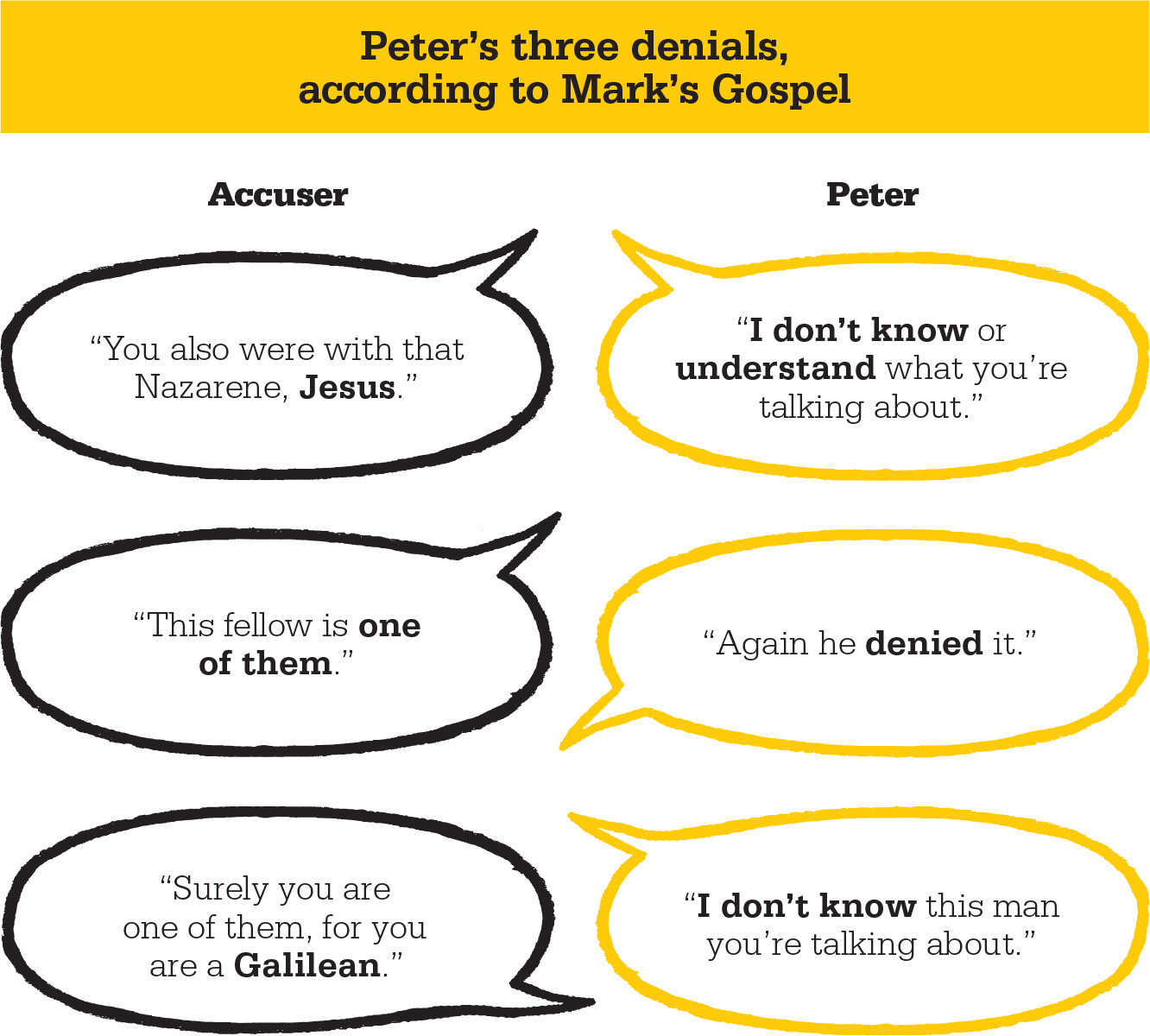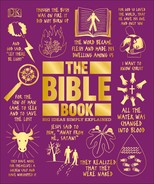
IN BRIEF
Matthew 26:31–35; 69–75; Mark 14:27–31; 66–72; Luke 22:31–34, 54–65; and John 13:38, 18:25–27
Peter denies Christ
c.29 CE Jerusalem, the courtyard of the High Priest right before the crucifixion of Jesus.
Jesus The Messiah and Son of God, in His final days before His crucifixion.
Peter Also called Simon Peter, one of Jesus’s inner circle and seemingly the leader of the disciples. Despite this, he still fears the officials.
Predicted by the prophets of the Old Testament, the disciples’ abandonment of Jesus in the period leading up to the crucifixion has long been a conflicting issue for many readers of the New Testament. During the Last Supper, Jesus quotes Zechariah 13:7, which foretold how: “This very night you will all fall away on account of me, for it is written: ‘I will strike the shepherd, and the sheep of the flock will be scattered’” (Matthew 26:31).
Hearing this prophecy, the disciples protest. Jesus tells them that once He—the figurative shepherd—is captured, His disciples, the sheep, will flee. Peter is especially upset by this claim and argues that this will never happen: “even if all fall away on account of you, I never will” (26:33). At this, Jesus sets him right; He tells Peter that before the rooster crows, he will deny Him three times. Peter, however, remains adamant—he says he would rather die alongside Jesus than disown Him.

The denials
Jesus’s words come to fruition immediately after Judas betrays Him in the Garden of Gethsemane. Guards take Jesus to the high priest’s house to stand trial. Peter follows, waits in the courtyard, and is approached by three people (John mentions two) who ask if he knows Jesus. Just as Jesus has predicted, when questioned, Peter denies knowing Jesus, even after he is identified as a Galilean by his speech—and is recognized as a disciple by a relative of the high priest’s servant (Luke 22:59). The third time Peter denies knowing Jesus, the rooster crows. Luke’s Gospel also says that at that Jesus turns to look at Peter through an open window, as if acknowledging His words coming to pass; all accounts, however, describe how Peter weeps once he realizes what he has done.

Symbolic dawn
The crowing of the dawn rooster signifies not only the breaking of dawn, but also that Jesus’s fate has been decided upon. Dawn signifies the new life that Jesus will bring about through His death, as does the rooster itself, a symbol of fertility. However, the coming of dawn is significant for another reason: at the time, trials were required to take place after daybreak if the Sanhedrin were to sentence the defendant to death.
Disciples forgiven
The Gospels give no reasons for the betrayal. Peter and the disciples are human, and may be afraid that they, too, will be arrested. The Gospels frequently describe the disciples as vulnerable and even dimwitted: they constantly question Jesus and have difficulty understanding His parables. Some appear to be in denial that Jesus will die. Their fallibility, however, shows that one does not have to be perfect to be a servant of Christ. Peter denies Jesus, yet he is the one who will eventually hold the keys to heaven.
The Sanhedrin

Described in all four Gospels, the Sanhedrin was a body of elders and priests that met to discuss religious and political matters. According to Acts, it convened several times a year.
The term Sanhedrin comes from a Greek word meaning “assembly.” There were lesser Sanhedrins that could form in any town or province, but the Great Sanhedrin was a large body of more than 70 elders that met in Jerusalem. It gathered to discuss the Law and acted as a judiciary body.
When Jesus met with the high priest elders, it is generally assumed that He is meeting with the Great Sanhedrin, whose members will determine whether He has committed blasphemy. However, they are portrayed in the Gospels as corrupt: Matthew writes that “the whole Sanhedrin were looking for false evidence against Jesus so that they could put Him to death” (26:59), an accusation that is repeated in Mark’s Gospel (14:55).
See also: The Last Supper • Betrayal in the Garden • The Crucifixion • The Empty Tomb
